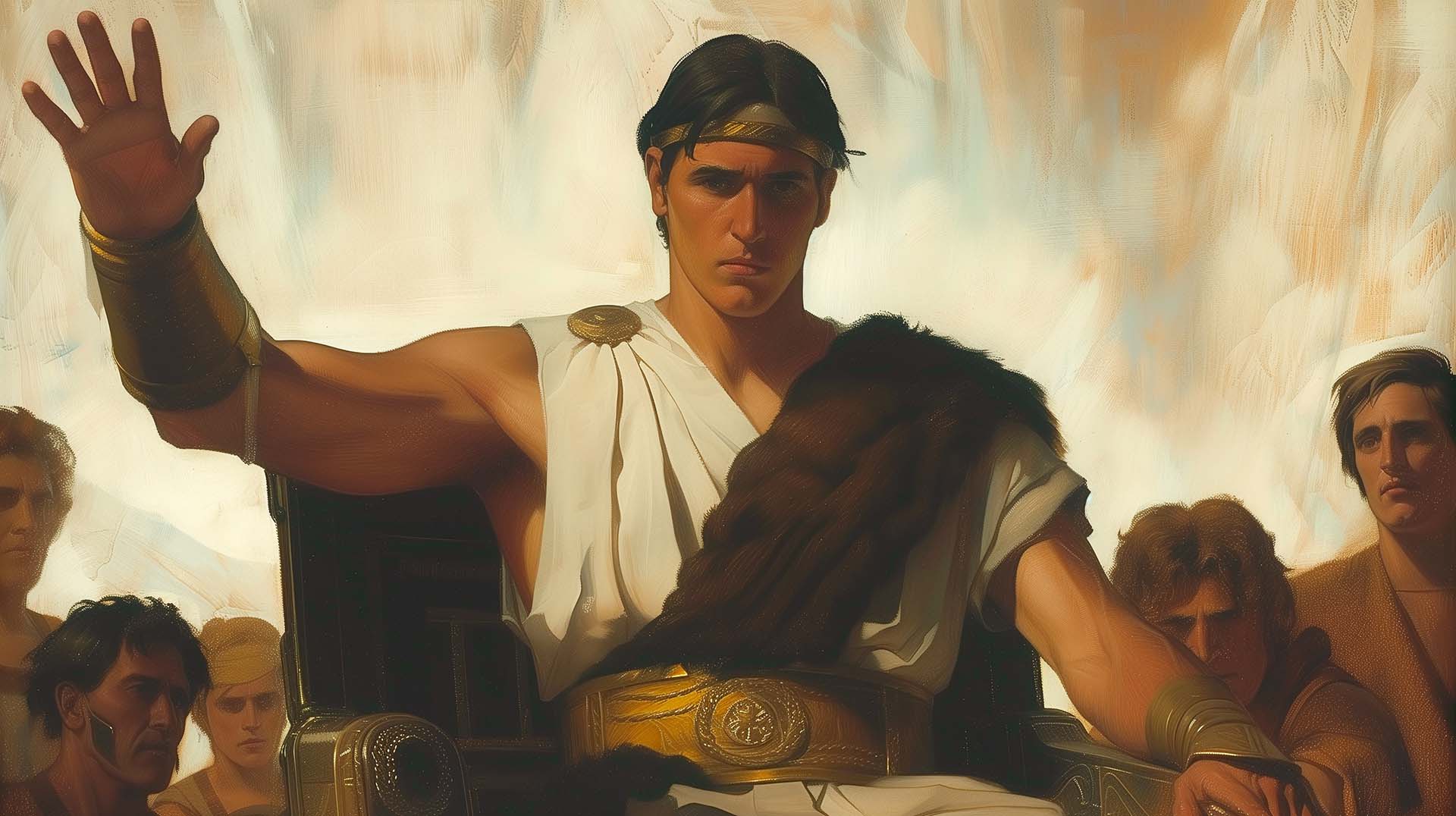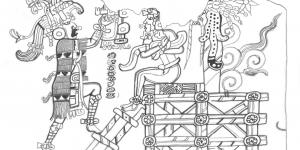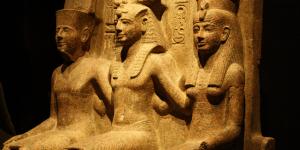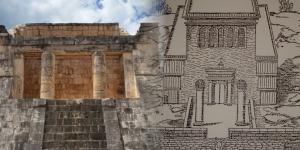You are here
Why Did Nephi’s People Want Him to Be a King?

2 Nephi 5:18
The Know
When Nephi and “all those who would go with [him]” fled from his older brothers and their murderous intentions, they came to a new land and built a city in a place they called Nephi (2 Nephi 5:6–8). The people even called themselves after Nephi, and Nephi says, “They would that I should be their king” (2 Nephi 5:18). Gregory Steven Dundas noted, “There was apparently a universal desire to make Nephi their king.”1
Up to this point, Nephi had already been acting as their leader, teaching them to work in various crafts and organizing their labor for large construction projects. He even referred to them as “my people” (2 Nephi 5:15–17). It is unclear what motivated the people to desire a king and how that role differed from the leadership Nephi was already providing. Perhaps this was their way of following Lehi’s counsel to “hearken unto the voice of Nephi” (2 Nephi 1:28). They may have also learned of righteous kings such as Josiah and Hezekiah from the plates of brass and hoped that Nephi could emulate those kings’ leadership.
Dundas suggests that in their request, “they were simply acting like a typical ancient people.”2 In that respect, it is interesting to note that other ancient people in pre-Columbian America were beginning to adopt an early form of kingship around this time. Brant A. Gardner hypothesized that the early Nephites’ “desire for a king reflected a surge in the rise of kings all around the city of Nephi.”3
In recent decades, scholars have observed that the initial developments that led to centralized authority and kingship in Mesoamerica began earlier than previously thought. David Webster noted that these developments began between 650 and 400 BC among the Maya.4 For example, Richard Hansen has noted that during the early first millennium BC in the Mirador Basin of Guatemala, “an embryonic leadership and status hierarchy” began to arise, with clear “symbols of hierarchical status” attested by 600 BC. Then, between “600 to 400 BC, kingcraft had evolved to the point where pyramidal structures” were constructed, and “with the maturation of kingship, a major new focus became the economic and social organization of massive labor forces to construct ritually significant architecture.”5
Similarly, early developments are attested in the southern Guatemalan highlands. For instance, at the site of Naranjo, about three kilometers from ancient Kaminaljuyú (at present-day Guatemala City), a stone monument at a large ceremonial center constructed between 750 and 400 BC suggests that, if not full-blown kingship, at least “some form of centralized authority played a key role in the construction and control of Naranjo.”6 Robert J. Scharer and Loa P. Traxler have noted that “the appearance of [such] public monuments marks the beginnings of the institution of divine kingship in Maya society.”7 By 400 BC, “the earliest Maya rulers had begun to dedicate carved stelae as public testimonials to their political legitimacy,” as evidenced by a stela from this period at Kaminaljuyú.8
According to Webster, “Some archaeologists believe that the basic ideological and iconographic conventions of kingship originated in highland centers such as Kaminaljuyú.”9 Interestingly, several Latter-day Saint scholars hypothesize that the city of Nephi was at or near Kaminaljuyú.10 If that is correct, Gardner explains, “The Book of Mormon places Nephi’s kingship in the right location for the nascent Mesoamerican forms of kingship, albeit early in its development. … In the city of Nephi, we see evidence of the general trend to kingship that would continue in other Mesoamerican communities.”11
The Why
In the Old Testament, when the Israelites requested that Samuel appoint “a king to judge us,” their motive was that they “may be like all the nations” around them (1 Samuel 8:5, 20; see Deuteronomy 17:14). Given the evidence for centralized authority and early king-like rulers emerging around the time of Nephi in the New World, the early people of Nephi may have been in a situation similar to that of the early Israelites. In fact, some Indigenous people from other nations may have assimilated with the people of Nephi, providing internal pressures to conform to this broader political trend.12
Much like the prophet Samuel was “displeased” that the people of Israel asked for a king, Nephi “was desirous that [his people] should have no king” (1 Samuel 8:6; 2 Nephi 5:18). Perhaps Nephi’s reluctance stemmed from his familiarity with this important account from Israelite history and his knowledge of the abysmal spiritual state of Judah at the tail end of the Hebrew monarchy.13
In the case of Samuel, after counseling with the Lord, he acquiesced to the people’s request for a king (1 Samuel 8:7, 22).14 Nephi, likewise, seems to have ultimately accepted the role of king among his people (2 Nephi 6:2; Jacob 1:11).15 Yet Nephi’s case was different in an important respect: when the Israelites approached Samuel, they asked him to choose a king; when the Nephites approached Nephi, they asked him to be a king. Thus, the Israelites, to some extent at least, were rejecting the Lord’s leadership through his prophet—as the Lord told Samuel, “they have not rejected thee, but they have rejected me, that I should not reign over them” (1 Samuel 8:7).
In contrast, the Lord had divinely appointed Nephi to be a “ruler and teacher” (1 Nephi 2:22; 2 Nephi 5:19).16 Thus, in seeking to crown Nephi as their king, the people were accepting the Lord’s chosen ruler and were thus embracing rather than rejecting the Lord’s right to reign over them. This is reinforced by the way righteous Nephite kings, beginning with Nephi himself, adhered to the criteria of kingship established by the Lord in Deuteronomy 17:14–20.17
The account of Samuel portrays the Israelites’ choice to be ruled by a king negatively, but other parts of scripture provide a different perspective. The book of Judges contains horrifying stories that many scholars believe were meant to illustrate the dangerous anarchy that prevailed before the rise of the monarchy.18 Thus, kingship is not without benefits.19 As Gardner writes, “kings arise because they are useful” or at least appear to be useful to certain interest groups.20 Dundas argues that in the Book of Mormon, the system of judges is actually less effective at maintaining societal order than the earlier monarchy but is preferable because it provides individuals greater spiritual accountability.21
As Alma and Mosiah would later explain, just men who establish the laws of God can be beneficial as kings to the people (Mosiah 23:8; 29:13).22 With the exception of King Noah, all Nephite kings who are mentioned in the record are said to be righteous.23 Yet it is not always possible to ensure just men ascend to the throne. Alma himself witnessed firsthand the oppression a wicked king can impose on a people, and Mosiah learned of the horrors that unrighteous kingship can produce through the record of the Jaredites.24 The brother of Jared warned the early Jaredites against kingship, saying, “Surely this thing leadeth into captivity”—a truth borne out in the bloody annals of Jaredite history.25
This prompted Mosiah to move away from the monarchy to a system of judges before the Nephites’ “sad experience” or “the course of human events” forced his hand.26 Mosiah knew, however, that even this more democratic form of governance was not immune to corruption, and he warned that if the time ever came that the “voice of the people doth choose iniquity, then is the time that the judgments of God will come upon you” (Mosiah 29:27).
Thus, the Book of Mormon teaches that in any form of government, what matters is the kind of men and women who occupy positions of power and the desire of the people to choose what is right. Therefore, all people living in all nations today should work within their rights to seek just men and women as government and civic leaders, just as the early people of Nephi did in desiring that Nephi become their king.
Further Reading
Brant A. Gardner, Traditions of the Fathers (Salt Lake City, UT: Greg Kofford Books, 2007), 184–189.
Taylor Halverson, “Deuteronomy 17:14–20 as Criteria for Book of Mormon Kingship,” Interpreter: A Journal of Latter-day Saint Faith and Scholarship 24 (2017): 1–10.
Gregory Steven Dundas, “Kingship, Democracy, and the Message of the Book of Mormon,” BYU Studies Quarterly 56, no. 2 (2017): 7–58.
- 1. Gregory Steven Dundas, “Kingship, Democracy, and the Message of the Book of Mormon,” BYU Studies Quarterly 56, no. 2 (2017): 18.
- 2. Dundas, “Kingship,” 18.
- 3. Brant A. Gardner, Traditions of the Fathers (Salt Lake City, UT: Greg Kofford Books, 2015), 185.
- 4. David Webster, The Fall of the Ancient Maya (New York, NY: Thames and Hudson, 2002), 44. Similarly, Linda Schele and Peter Mathews, The Code of Kings: The Language of Seven Sacred Maya Temples and Tombs (New York, NY: Scribner, 1998), 17, describe the rise of “early kings, called ahaw” in the context of developments dated to around 500 BC.
- 5. Richard D. Hansen, “Kingship in the Cradle of Maya Civilization: The Mirador Basin,” in Fanning the Sacred Flame: Mesoamerican Studies in Honor of H. B. Nicholson, ed. Matthew A. Boxt and Brian D. Dillon (Boulder, CO: University Press of Colorado, 2012), 145–147.
- 6. Bárbara Arroyo, “The City over the City: Kaminaljuyu and Urbanism,” in Early Mesoamerican Cities: Urbanism and Urbanization in the Formative Period, ed. Michael Love and Julia Guernsey (Cambridge, UK: Cambridge University Press, 2022), 124–125.
- 7. Robert J. Sharer with Loa P. Traxler, The Ancient Maya, 6th ed. (Stanford, CA: Stanford University Press, 2006), 183. Interestingly, the choice of Nephi as king may also relate to the fact that he “had physical emblems of his right of rule.” The Lamanites were angry generations later that Nephi had “robbed” the plates from his brothers, indicating that they were significantly valuable (Mosiah 10:16). This may be because of the valuable purpose they served as a “lineage history,” an important way of justifying political rule. John Sorenson, Mormon’s Codex (Salt Lake City, UT: Deseret Book, 2013), 198–218. In fact, some suggest that Nephi’s own small plates were a smaller lineage history meant to justify his rulership over his brothers. See Book of Mormon Central, “Why Did Nephi Write His Small Plates? (1 Nephi 9:4),” KnoWhy 11 (January 14, 2016). Gardner notes that symbols of rulership and emblems of sovereignty are repeated themes in Mesoamerican records, and we see throughout the Book of Mormon how the sword of Laban, the Liahona, and the metal plates are maintained by (and subsequently validate) the Nephite political and spiritual leaders. Gardner, Traditions of the Fathers, 187–188.
- 8. Sharer and Traxler, Ancient Maya, 182, 184, fig. 5.1.
- 9. Webster, Fall of the Ancient Maya, 44.
- 10. See Gardner, Traditions of the Fathers, 164–168. See also Daniel Johnson, Jared Cooper, and Derek Gasser, An LDS Guide to Mesoamerica (Springville, UT: Cedar Fort, 2008), 25–29 (sidebar); John Sorenson, An Ancient American Setting for the Book of Mormon (Salt Lake City, UT: Deseret Book, 1985), 141; Sorenson, Mormon’s Codex, 131; Garth Norman, Book of Mormon—Mesoamerican Geography: History Study Map (American Fork, UT: ARCON, 2008), 31 no. 48; Joseph L. Allen and Blake J. Allen, Exploring the Lands of the Book of Mormon (American Fork, UT: Covenant Communications, 2011), 720–721; F. Richard Hauck, Deciphering the Geography of the Book of Mormon (Salt Lake City, UT: Deseret Book, 1988), 9, places it nearby at Mixco Viejo.
- 11. Gardner, Traditions of the Fathers, 186. Gardner reasons that the Book of Mormon appears on the slightly early side “because we have the textual information for its beginning rather than being required to wait for the monumental architecture that provide the archaeological evidence for kingship” (p. 187). See also Brant A. Gardner, Second Witness: Analytical and Contextual Commentary on the Book of Mormon, 6 vols. (Salt Lake City, UT: Greg Kofford Books, 2007), 2:106–107.
- 12. Gardner, Second Witness, 2:107, notes that the appointment of a king and the massive construction projects initiated by Nephi signal a much larger population than just Nephi’s followers from his immediate family. Since Nephi shows reluctance to become king, Gardner reasons that it was people indigenous to the New World who merged with Nephi’s family who most strongly pushed for his kingship (2 Nephi 5:18).
- 13. Dundas, “Kingship,” 18: “Nephi, like many of the Book of Mormon leaders, had a fundamental opposition to the rule of kings. There was in Hebrew thought a tradition that opposed kingship as an unnecessary intrusion between the people and their God, and Nephi seems to tap into that tradition.” This is part of the reason Brant Gardner suggests that it was Mesoamerican communities that pushed for the institution among the Nephites rather than vice versa. Gardner, Traditions of the Fathers,186–187. However, Nephi’s dynasty can also be seen as an extension of the Israelite kingship that remained an unsolved problem until the days of the second Mosiah: “The mistake the Israelites made in converting to leadership by kings (see I Samuel 8–12) was undone by wise rulers [later] in the Book of Mormon (see Mosiah 23 and 29).” Alan Goff, “Scratching the Surface of Book of Mormon Narratives,” FARMS Review of Books 12, no. 2 (2000): 51–82.
- 14. The prophet Samuel had warned the Israelites against kingship, but the consent of the majority overpowered prophetic counsel and God allowed them to have their way. We see this principle of God coalescing to our own detriment in other instances when people attempt to force God’s hand, like Joseph Smith requesting permission to share the 116 pages until he was granted his request at his own expense (Doctrine and Covenants 3; 10). Compare D&C 88:65: “And if ye ask anything that is not expedient for you, it shall turn unto your condemnation”; or Jacob 4:14: “And because they desire it God hath done it, that they may stumble.” Yet even when we reject God’s will and highest truths, He often provides a back-up plan and gives instructions for prospering in a second-best scenario. Restoration scripture teaches that the law of Moses was given in place of a higher law because Israel was unprepared for it. (Joseph Smith Translation, Exodus 34; D&C 84:23–27).
- 15. Noel B. Reynolds argues against Nephi being a king in “Nephite Kingship Reconsidered,” in Mormons, Scripture, and the Ancient World: Studies in Honor of John L. Sorenson, ed. Davis Bitton (Provo, UT: FARMS, 1998), 151–189. Gardner addresses Reynolds’s argument in Traditions of the Fathers, 184n107. It seems likely that Nephi did accept the role of king. Nephi begins his record by calling it “his reign and ministry,” and he is repeatedly referred to as a potential or actual ruler and teacher over his brothers. See Nephi’s subtitle to 1 Nephi and 1 Nephi 2:22; 3:29; 16:37–38; 18:10; 2 Nephi 5:3, 19; Jacob 1:9. However, once he acknowledges that he had been a ruler and teacher, he usually shies away from the title of king. Jacob refers to Nephi as a protector several times, and thus some have argued that he was not truly a king (2 Nephi 6:2; Jacob 1:10). The difference seems nominal. Nephi notes that the large plates are for the “reign of the kings,” which if he has already begun writing, he must see himself as a part of (1 Nephi 9:4). Jacob says that the people look to him “as a king” and notes that Nephi anoints the next king, implying that Nephi was indeed a king (2 Nephi 6:2; Jacob 1:9–11).
- 16. On the one hand, Nephi had been told that he would be a ruler by prophecy in 1 Nephi 2:22. Yet we see both in scripture and literature that descriptive prophecy does not make something a morally prescribed action, like Judas betraying Jesus or Jehu being told that he would be king in 2 Kings 9:12 or the story of Macbeth. In fact, both Jacob and Lehi wrote about how this new land was to be a “land of liberty” with “no kings upon the land,” which makes the decision all the more interesting (2 Nephi 1:5–12; 10:10–16). Gardner explains it as referring specifically to the Gentiles. Gardner, Second Witness, 2:186–188.
- 17. See Taylor Halverson, “Deuteronomy 17:14–20 as Criteria for Book of Mormon Kingship,” Interpreter: A Journal of Latter-day Saint Faith and Scholarship 24 (2017): 1–10.
- 18. Alan Goff discusses this in his master’s thesis: “Significantly the story begins with the pro-monarchial statement. … ‘And it came to pass in those days when there was no king in Israel …’ (Judg. 19:1). The third story ends not only the three stories about the tribe of Benjamin, but the book of Judges with a similar statement: ‘In those days there was no king in Israel: every man did that which was right in his own eyes’ (21:25). These three stories are framed with these statements about social disintegration and wickedness. With this framing we would expect to see the three stories illustrate the principle that the Israelites were doing what was right in their own eyes but wrong in the Lord’s. … When seen in the light cast by the Saul story … we also understand the pro-monarchial message at the end of the book of Judges: a king is needed to rally the people round righteous causes and prevent the unrighteous ones we have just read about.” Alan Goff, “A Hermeneutic of Sacred Texts: Historicism, Revisionism, Positivism, and the Bible and Book of Mormon” (master’s thesis, Brigham Young University, 1989), 66–67, 73. This is similar to the general social contract argument made by Thomas Hobbes in Leviathan: “Hereby it is manifest, that during the time men live without a common Power to keep them all in awe, they are in that condition which is called Warre; and such a warre, as is of every man, against every man.” Thomas Hobbes, Leviathan (London, UK: 1651; Project Guttenberg, 2002), pt. 1, chap. 13.
- 19. Scripture also teaches us that leadership naturally emerges: “Of necessity there are presidents” (D&C 107:21). Also, it does not appear to be totally contradictory to have a monarchy and a land of liberty. At least one king in the Book of Mormon has a firm decree of religious tolerance (Alma 23:1). In Romans 13:1–7, Paul also encourages the Roman Saints to submit to kings and considers them to be divinely sanctioned.
- 20. Gardner, Second Witness, 6:235.
- 21. Dundas, “Kingship,” 52–58.
- 22. Plato similarly believed that “until philosophers are kings, or the kings and princes of this world have the spirit and power of philosophy, and political greatness and wisdom meet in one … cities will never have rest from their evils.” Plato, Republic, trans. Benjamin Jowett (Mineola, NY: Dover, 2000), 141. Plato’s Apology of Socrates also functions as a commentary on potential shortcomings of democracy, similar to Mosiah 29:27.
- 23. We would somewhat expect the Nephite (excluding Zeniffites) monarchy to degenerate quickly as it did for the Israelites, Judahites, Jaredites, and Zeniffites. However, the only Nephite kings described are preeminently righteous: Nephi, the unnamed kings who followed him (Jarom 1:7), the first Mosiah, Benjamin, and the second Mosiah. There may be hints of some unrighteous kingship in the moral degeneration under Nephi’s successor, some of the apostasy and warring between Jacob and Omni (if Jarom’s statement about kings didn’t apply to all of those who came before), and the flight of the first Mosiah from the land of Nephi. That Mosiah has the tokens of kingship suggests that he was likely in the royal line and a descendant of Nephi, but that is not explicitly confirmed. He may have been anointed as a new king in Zarahemla after the fall of a previous Nephite king. Gardner notes that the Nephites strive to maintain a Christian egalitarian ideal despite having a monarchy. Gardner, Traditions of the Fathers, 188–189.
- 24. Mosiah 23:6–13; 29:5–35; Ether 6:22–27; 7–15. Book of Mormon Central, “What Do the Jaredites Have to Do With the Reign of the Judges? (Mosiah 28:17),” KnoWhy 106 (May 24, 2016).
- 25. Ether 6:23; see Ether 7:5, 7, 17; 8:3–4; 10:14–15, 30–31; 11:9, 18–19, 23; 13:23.
- 26. Doctrine and Covenants 121:39; Thomas Jefferson et al., July 4, 1776, Copy of Declaration of Independence.
KnoWhy Citation
Related KnoWhys
Subscribe
Get the latest updates on Book of Mormon topics and research for free





